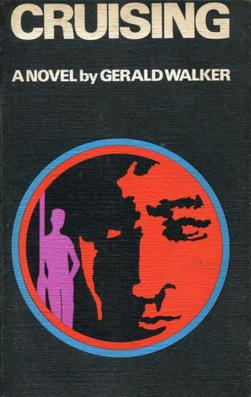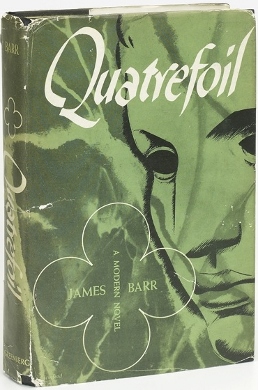Queer studies, sexual diversity studies, or LGBT studies is the study of topics relating to sexual orientation and gender identity usually focusing on lesbian, gay, bisexual, transgender, gender dysphoria, asexual, queer, questioning, intersex people and cultures.
Societal attitudes towards same-sex relationships have varied over time and place. Attitudes to male homosexuality have varied from requiring males to engage in same-sex relationships to casual integration, through acceptance, to seeing the practice as a minor sin, repressing it through law enforcement and judicial mechanisms, and to proscribing it under penalty of death. In addition, it has varied as to whether any negative attitudes towards men who have sex with men have extended to all participants, as has been common in Abrahamic religions, or only to passive (penetrated) participants, as was common in Ancient Greece and Ancient Rome. Female homosexuality has historically been given less acknowledgement, explicit acceptance and opposition. The widespread concept of homosexuality as a sexual orientation and sexual identity is a relatively recent development, with the word itself being coined in the 19th century.
Lesbian, gay, bisexual, and transgender (LGBT) characters have been depicted in video games since the 1980s. In the history of video games, LGBT characters have been almost nonexistent for a long time, reflecting the overall heteronormativity of the medium. While there has been a trend towards greater representation of LGBT people in video games, they are frequently identified as LGBT in secondary material, such as comics, rather than in the games themselves. In 2018, Gamesradar’s Sam Greer pored through thousands of gaming titles and found 179 games with any LGBT representation: Of those 179 games, only 83 have queer characters who are playable characters. And of those, only eight feature a main character who is pre-written as queer as opposed to them being queer as an option.

Queer Duck is an adult animated series produced by Icebox.com that originally appeared on the company's website, then later moved to the American cable network Showtime, and returned to TV on Teletoon at Night, where it aired following the American version of Queer as Folk. Although far from being the first gay cartoon character, Queer Duck was the first animated series to have homosexuality as its predominant theme.

Gay literature is a collective term for literature produced by or for the gay community which involves characters, plot lines, and/or themes portraying male homosexual behavior.
Randall Kenan was an American author. Born in Brooklyn, New York, at six weeks old Kenan moved to Duplin County, North Carolina, a small rural community, where he lived with his grandparents in a town named Wallace. Many of Kenan's novels are set around the area of his home in North Carolina. The focus of much of Kenan's work centers around what it means to be black and gay in the southern United States. Some of Kenan's most notable works include the collection of short stories Let the Dead Bury Their Dead, named a New York Times Notable Book in 1992, A Visitation of Spirits, and The Fire This Time. Kenan was the recipient of a Guggenheim Fellowship, a Whiting Award, and the John Dos Passos Prize.
LGBT themes in horror fiction refers to sexuality in horror fiction that can often focus on LGBTQ+ characters and themes within various forms of media. It may deal with characters who are coded as or who are openly LGBTQ+, or it may deal with themes or plots that are specific to gender and sexual minorities. Depending on when it was made, it may contain open statements of gender variance, sexuality, same-sex sexual imagery, same-sex love or affection or simply a sensibility that has special meaning to LGBTQ+ people.

Cruising is a novel written by New York Times reporter Gerald Walker and published in 1970. The novel is about an undercover policeman looking for a homosexual serial killer in the gay New York City of 1970 before S/M and leather subcultures became well known. The murder victims were closeted or relatively open men who came across the killer while "cruising" for sex. While working undercover, the policeman develops feelings for his gay neighbor.
Gay teen fiction is a subgenre that overlaps with LGBTQ+ literature and young adult literature. This article covers books about gay and bisexual teenage characters who are male.
Gay is a term that primarily refers to a homosexual person or the trait of being homosexual. The term originally meant 'carefree', 'cheerful', or 'bright and showy'.

The Last Herald-Mage is a trilogy of fantasy novels by American author Mercedes Lackey, published from 1989 to 1990. The story centers around a mage named Vanyel Ashkevron who lives in the fictional kingdom of Valdemar. It was the first high fantasy series with a gay protagonist from a mainstream publisher, and was well-received by critics, many of whom regard it as Lackey's best work.
Daniel Curzon is a novelist, playwright, educator, and writer of etiquette manuals for gay men.
This article focuses on Japanese definitions of gender and sexuality, Japanese reactions to queer life, the clash between traditional and contemporary ideas, and the cultural restraints of being queer in Japan. The Western term “queer,” an umbrella term for gay, lesbian, bisexual, and transgender represents a change in thought pertaining to gender and sexuality in contemporary Japan.
Toby Johnson is an American novelist and writer in the field of gay spirituality.
Robert McRuer is an American theorist who has contributed to fields in transnational queer and disability studies. McRuer is known as being one of the founding scholars involved in forming the field of queer disability studies, particularly for a theoretical outlook known as crip theory. He is currently professor of English at The George Washington University in Washington, DC.

Justin Chin (1969–2015) was a Malaysian-American poet, essayist and performer. In his work he often dealt with queer Asian-American identity and interrogated this category's personal and political circumstances.

Quatrefoil: A Modern Novel, sometimes called Quatrefoil, is a novel about gay men written in 1950 by James W. Fugaté under the pen name James Barr. It is known for being the first modern book to portray homosexuality in a positive way. The main character, Phillip, is based on a college fraternity brother that the author had an affair with while in college.
Bisexual literature is a subgenre of LGBT literature that includes literary works and authors that address the topic of bisexuality or biromanticism. This includes characters, plot lines, and/or themes portraying bisexual behavior in both men and women.
Queer coding is the subtextual coding of a character in media as queer. Though such a character's sexual identity may not be explicitly confirmed within their respective work or they may in fact be straight despite their queer mannerisms, a character might be coded as queer through the use of traits and stereotypes recognisable to the audience. Such traits are greatly varied, but traits of exaggerated masculinity and femininity, vanity, and hypersexuality are frequent. Queer coding is a concept both in the discussion of media portrayal of LGBT people and academic research involving queer theory or gender studies.
In the early 2000s, LGBTQ+ representation in U.S. animation faltered, but expanded representation from animation aired in the 1990s or earlier. In this decade, series like Queer Duck, The Oblongs, The Venture Bros., Drawn Together, and Archer would air, along with various series which began in previous decades like The Simpsons, Family Guy, and South Park.







